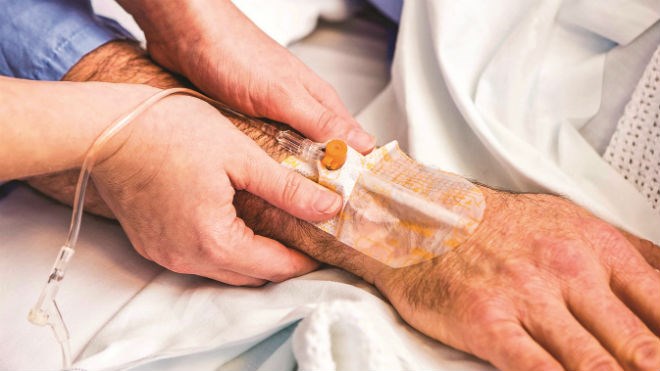The Thunder Bay Regional Health Sciences Centre introduced new code status levels Monday that identify the level of life support critically ill patients wish to receive.
At level five, a patient would receive all medically appropriate life-sustaining measures. At level one, a patient wants only pain relief and palliative care to provide relief for any discomfort they may have.
Levels two to four represent various levels of care in between the two extremes.
Level three, for example, reads: “I do not want CPR. I will accept a medically appropriate trial of non-invasive ventilation, including life support.”
Patients wear different coloured armbands depending on which code status level they have chosen.
Health Sciences North has had a level of treatment policy in place since 2003 that outlines how health-care professionals approach patients about their end-of-life care needs.
“We haven't codified it to the extent that they have in Thunder Bay,” McNeil said.
Several years ago, hospital staff discussed introducing armbands, as has been done in Thunder Bay, but decided against the idea.
Staff determined the armbands could infringe on patients' privacy by publicly disclosing their treatment wishes.
They also felt the armbands could be problematic because it is not unusual for patients to change their minds about the level of life support they would like to receive.
Level-of-care conversations with patients or their substitute decision makers, McNeil said, are ongoing throughout their treatment and care in hospital.
But McNeil said Thunder Bay's policy will encourage patients and health-care workers to have those difficult conversations.
“These (conversations) don't come naturally to anybody within our current society, including health-care professionals,” he said.
If the model in Thunder Bay turns out to be successful, McNeil said it's possible Health Sciences North could adopt a similar approach.
“If they've identified a practice that is a good practice, and is spreadable throughout the system, I think many people will adopt it,” he said.
Join Sudbury.com+
- Messages
- Post a Listing
- Your Listings
- Your Profile
- Your Subscriptions
- Your Likes
- Your Business
- Support Local News
- Payment History
Sudbury.com+ members
Already a +member?
Not a +member?
Sign up for a Sudbury.com+ account for instant access to upcoming contests, local offers, auctions and so much more.
